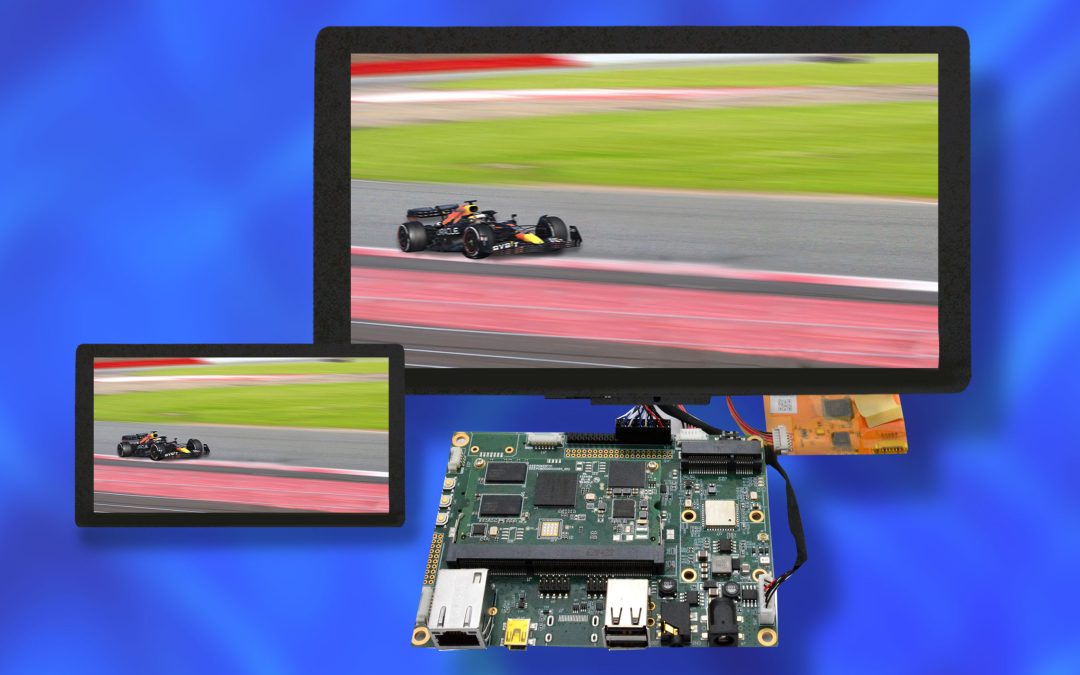Global companies with high-volume products will typically develop the electronics “from scratch”, designing the circuit, choosing the components and laying out the PCB. But is this the best way? For smaller OEMs, Embedded Modules can offer a powerful, rapid-time-to-market approach resulting in a more affordable solution.
An electronic design using embedded modules can include: a System-on-Module (SoM), peripheral modules and a “Carrier Board”. Peripheral modules will for example include wireless data modules, camera vision modules and display modules. The SoM module and the peripheral modules are usually mounted on the carrier board, which provides power and a wide range of connectivity for the end application.
Embedded modules can perform whatever the required application needs in terms of functionality. Example applications range from IoT home and office products to factory automation and full AI robotic control systems.
Powerful. Arm-Cortex based SoMs are the most common offering. A good example is the AI-focused EDM-G-IMX8M-PLUS and the VisionSOM-V2L from Inelco Hunter. The SoMs incorporate an ARM Cortex-A processor and an ARM Cortex-M with a built-in AI accelerator. Truly powerful.
Quick. Solutions using embedded modules offer a very rapid time-to-market. Embedded modules from the major manufacturers are qualified and fully tested, avoiding early product introduction risks. Also, the time required to manufacture and test a complex CPU subsystem is completely avoided – manufacturing costs are reduced or eliminated.
Affordable. The reduced design time and low/zero production cost result in a very fast time-to-market. The end-result is rapid profitability. Not only that, regular product updates are a simple matter of swapping out modules, extending the product lifetime and keeping one step ahead of the competition.
Embedded Module examples
Carrier Boards. Flexibility is key – many specifications and functions are available from a wide range of SoM manufacturers. Standard carrier boards can also be used to evaluate a proposed SoM. As an added bonus, manufacturers like SoMLabs and Technexion offer open-source hardware so that custom carrier boards can be easily developed.
System-on-Modules. A typical SoM incorporates at least one microprocessor or DSP (digital signal processor). Memory will include RAM and Flash. Industry-standard communication interfaces will include USB, Ethernet, USART, PCI-Express, CAN, LVDS, MIPI-DSI/CSI, HDMI, I²C and SPI. Examples of peripherals will include timers, Wi-Fi, Bluetooth and interfaces such as digital-to-analogue and analogue-to-digital converters.
Touch Displays. A ready-to-use embedded touch display module will offer an easy-to-use solution. A good example is the 10.1 inch PCAP Touch Screen Kit, developed by Inelco Hunter utilising a Raspberry Pi as the SoM. This cost-effective, pre-assembled display kit offers time savings by speeding up installation and cutting development time. The screen comes pre-assembled and provides a resolution up to WXGA.
Blindingly Fast Displays. For applications that require the ultimate in power and response, the Inelco Powertip MPU range of displays utilises NXP or Rockchip Quad Core Arm Cortex-A processors, providing what might be called blindingly fast response times and the ultimate in smooth 2D/3D graphics.
Embedded Vision Modules. AI is opening up many new application areas including robotics, drones and autonomous vehicle systems. Embedded vision enables the perception and interaction with the surroundings, performing complex tasks with precision. Speed, precision and the ability to work dependably in low-light conditions is absolutely essential. An example of high-performance industrial-grade embedded vision camera modules is the TechNexion range from Inelco Hunter.
Peripheral Support. For machine vision and machine learning applications which do not rely on a cloud connection (EDGE computing), SoMs with built-in AI accelerators are an excellent solution. Examples of suitable SoMs include the AXON-IMX8M-PLUS, EDM-G-IMX8M-PLUS, and ROVY-4VM. These modules offer AI computation power ranging from 2.3 to 8.0 TOPS while maintaining low power consumption.
Wireless. This type of module will include Wirepas Mesh modules, Bluetooth low energy modules (versions 4.1, 4.2 and 5.0), LPWAN modules, and Dual mode modules (Bluetooth version 5.0). For example, Fujitsu wireless modules have a small form factor and their design provides optimised IO usage.
Embedded Module Software. Linux is the most commonly used OS with Embedded SoMs. The OS is well-suited where Low Latency / Real-Time response is not a priority. Linux is a sophisticated general-purpose OS, but if Real-Time performance is needed and a general-purpose RTOS is considered to be over-complex, you could consider one of the many third-party software products dedicated to Arm-based SoM systems, for example Novos.us
Configuration support. Choosing the most appropriate embedded modules can be tricky. Inelco Hunter’s in-depth engineering support ensures rapid implementation, speeding up the customer’s time-to-market. Inelco’s engineers will work with the SME engineers. This added-value support is at the core of Inelco’s philosophy, and has been for the last 30 years, setting them apart from the “stock & ship” distributors.
Direct link to embedded modules page: www.inelcohunter.co.uk/embedded

